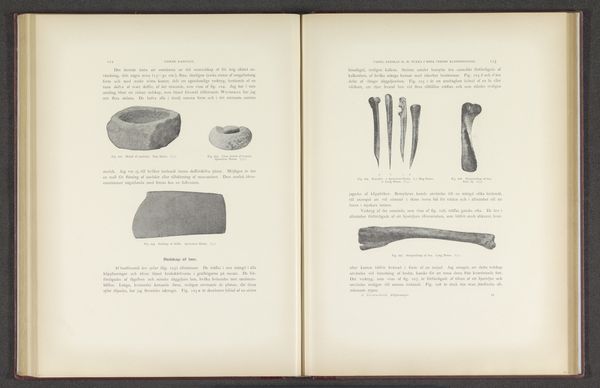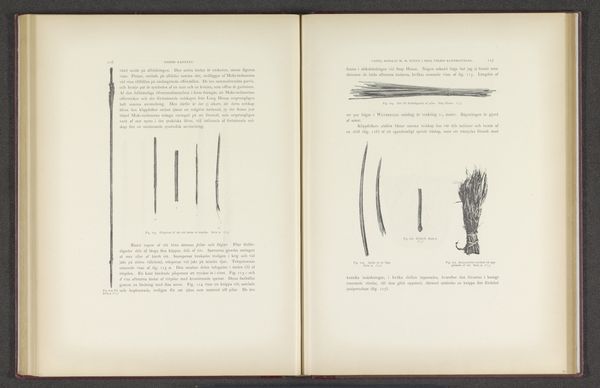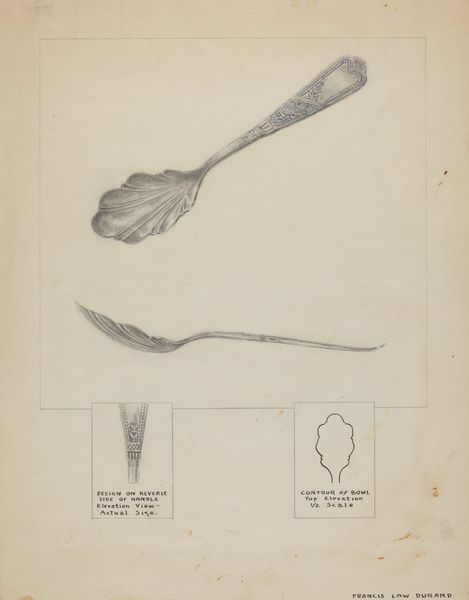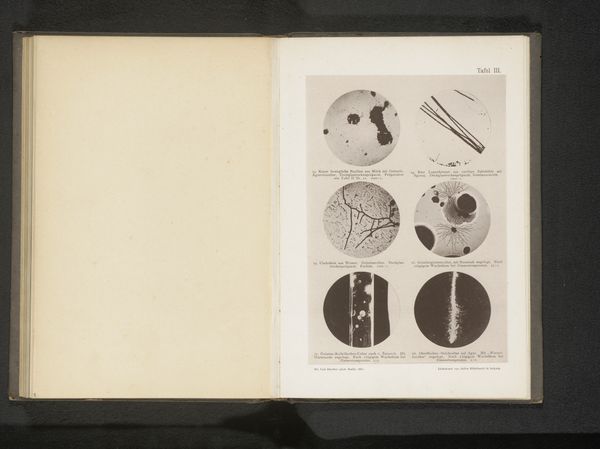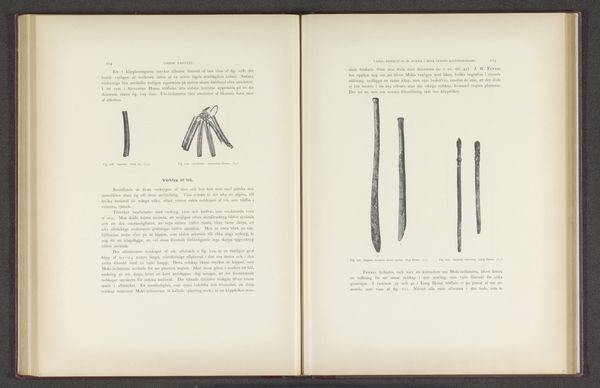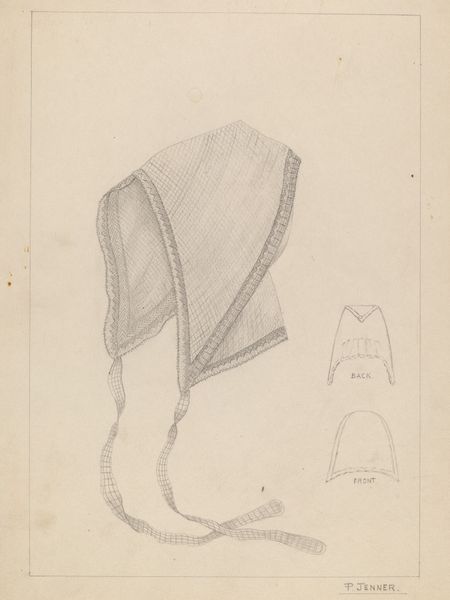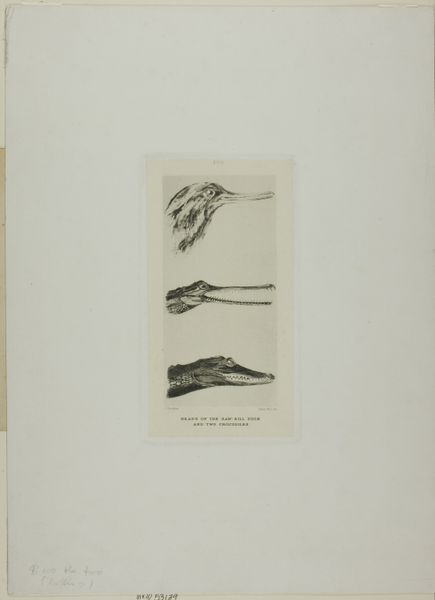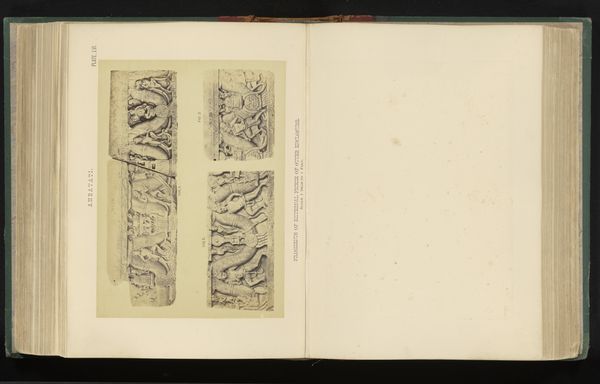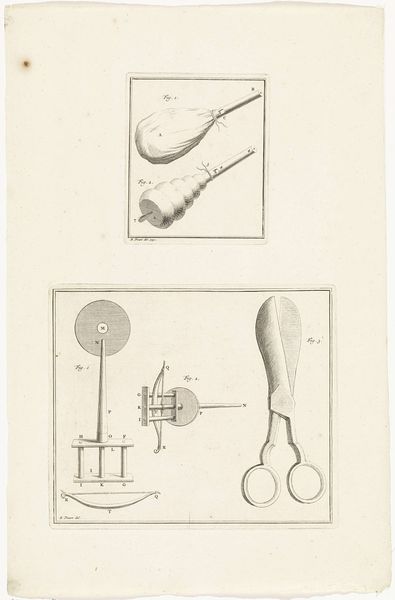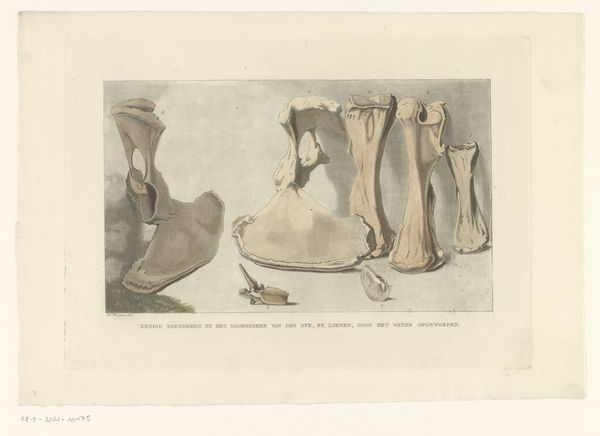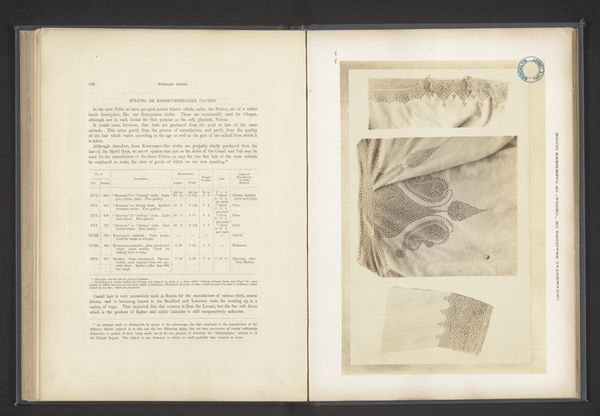
Fotoreproductie van tekeningen van de wormen Teredo Navalis en Lycoris Fucata door Pieter Harting before 1867
0:00
0:00
drawing, paper, ink
#
drawing
#
aged paper
#
paper
#
ink
#
history-painting
#
academic-art
#
naturalism
#
realism
Dimensions: height 332 mm, width 441 mm
Copyright: Rijks Museum: Open Domain
Curator: Looking at this aged paper, I feel transported! There’s a peculiar harmony between the organic subject and the rigid precision of the draftsmanship, isn't there? Editor: It absolutely vibrates with a quiet intensity. We are looking at a phot reproduction of drawings, ink on paper, crafted before 1867 by Pieter Harting, depicting the Teredo Navalis and Lycoris Fucata worms. It’s an incredibly detailed study. Curator: "Detailed" is one word for it, yes, and those two species offer us powerful symbols! The shipworm, or Teredo Navalis, has a well-earned symbolic reputation, because, despite its small size, it eats wood and caused massive destruction to wooden ships and marine structures over the centuries. It's a quiet menace made visible by this Dutch realist's skilled hand. Editor: Quite! A potent metaphor for unseen forces undermining grand designs, for decay lurking beneath the surface of progress. Harting gives form to anxieties of the day, in the age of discovery and exploration those tiny creatures caused colossal problems, because one can’t embark on a journey without ships and dry docks. What do you think of the Lycoris Fucata, or the seaweed worm? Curator: Considerably less notorious, at least in my book. This species lives inside seaweed, and I suppose can represent symbiosis? More so to me, the seaweed worm adds a level of symbolic ambiguity. A more hidden narrative, a creature that has an existence thanks to its surrounding. It almost mirrors our place in our environments… or how it SHOULD be at least! Editor: That contrast in symbolic resonance strikes me deeply. And the realism he employs underscores these nuances, don't you think? Each worm rendered with such dedication it transforms scientific observation into, dare I say, visual poetry. It’s like a melancholic ballad about our inter-connectedness. Curator: I love the expression “visual poetry” in this instance. Seeing the phot reproduction made of these worm drawings is almost romantic, given their legacy… A curious, contemplative encounter, to say the least. Editor: A fine point indeed! Harting's humble worms hold more profound meaning that expands from paper to the ocean and even our shared humanity. I can't help but love a marriage of art and science that teaches us something about ourselves.
Comments
No comments
Be the first to comment and join the conversation on the ultimate creative platform.

